How to Sell Art Online on Shopify: 14 Detailed Steps

Selling art on Shopify is increasingly important. It can be a rewarding way to share your creativity with the world while earning money doing what you love. According to statistics, 40.6% of Shopify stores categorized under Arts & Entertainment offer products related to Visual Art and design.
With the right strategies, you can attract customers and turn your passion into a successful business. In this guide, we’ll explore 14 steps to help you sell your art effectively on Shopify, whether you’re a seasoned artist or just starting out.
Key types of art you should pay attention to
The digital art market offers vast opportunities for a range of business models, regardless of whether you’re an independent artist or an experienced curator. An eCommerce platform like Shopify provides an excellent base to showcase a diverse array of art. Here’s a guide to the types of art that can enhance your online store:
1. Original Art
- Sell artworks in their purest, untouched form, whether they’re your creations or those of renowned artists.
- The value of original art lies in its uniqueness and originality.
2. Limited Edition Art Prints
- These are produced in a fixed number and each piece is usually signed and numbered, such as 5/200, enhancing their collectible nature.
- The scarcity of these prints adds to their desirability and value.
3. Digital Downloads
- Offer art in a digital format that customers can download directly, allowing for limitless sales potential.
- This option caters to immediate consumer satisfaction as they receive the art instantly.
4. Custom Art
- Provide a personalized art service where customers can order bespoke pieces, from pet portraits to personalized sculptures.
- This type of art is created based on specific customer requests and preferences, involving them directly in the creative process.
How to sell art on Shopify?
1. Choose your business model
There are two approaches to selling art online: creating or curating. Which path suits you best?
Create and sell your own art
As an artist, it’s your job to generate original art, reproductions, or digital artwork, and sell it directly to customers or through galleries, retail partners, or agents.
Selling artwork directly has become increasingly accessible, with new creator tools emerging frequently. Galleries can help introduce your work to wider audiences and provide resources and expertise in promoting, exhibiting, handling, and shipping artwork.

Curate the works of other artists
If you’re not an artist yourself but have a keen eye and passion for art, you can still enter the art sales arena as a curator.
Some artists may prefer not to handle marketing or online sales and instead rely on gallerists, curators, or retail partners. As a partner to artists, you earn a percentage of the sale price in exchange for your business acumen and services.

2. Choose between selling original art or reproductions
Selling original art
The optimal approach to selling your art online can vary based on the type of art you create and the medium you use. Options include selling original pieces, creating reproductions, or both.
For instance, fine artists who work with traditional mediums and target higher price points might prefer to sell only their original works. On the other hand, digital art lends itself well to reproductions, such as prints and merchandise, due to its ability to be duplicated flawlessly. Nevertheless, artwork produced in 2D mediums typically offers numerous opportunities to achieve repeated sales from a single piece. Consider the following formats:
- Original art: Paintings, drawings, and illustrations. Note that it’s possible to sell both the original piece as well as prints of the same work.
- Limited- or open-edition prints: Available framed, unframed, or printed on canvas.
- Digital art or digital downloads: Includes desktop wallpaper, templates, and print-at-home art.
- Custom art: Created specifically upon customer request or commissioned by businesses
- Merchandise: Features your art printed on items like hats, mugs, greeting cards, iPhone cases, t-shirts, enamel pins and stationery.
- Repeat prints: Utilized on fabric, wrapping paper, or wallpaper.
- Licensing: Involves “renting” your work to other brands or publications, which is ideal for illustrators and photographers.
- Collaborations with brands: A limited collection sold through the partner brand’s store.
How to sell paintings online?
This guide will offer comprehensive support for artists selling paintings online. With the exception of the section on printing artwork, each step outlined in this guide applies to both original and reproduction art sales on online platforms.
How to sell prints online?
In addition to the information on selling original art online, this guide will also provide you with the necessary details to sell prints of your artwork via digital channels. You’ll learn how to duplicate your original pieces and sell them multiple times over, without incurring additional production costs. The guide will also cover how to use print-on-demand services to easily and quickly begin selling your digital art online through a few simple clicks.
Selling other types of art reproductions
Reproductions of art prints: open edition versus limited edition
What is an open edition?
Open edition refers to printing and selling an unlimited number of copies of an original work. With this approach, you can continue to earn profit from a single piece of art as long as there is still demand for it, without worrying about the limited availability of the original work. However, the lack of exclusivity may result in a decrease in the overall value of your art.
What is a limited edition?
Limited edition involves printing a fixed number of prints before they are sold out. These prints are often signed and numbered by the artist, which adds value and authenticity to the artwork. The limited availability of these prints increases their value, allowing you to sell them at higher price points.
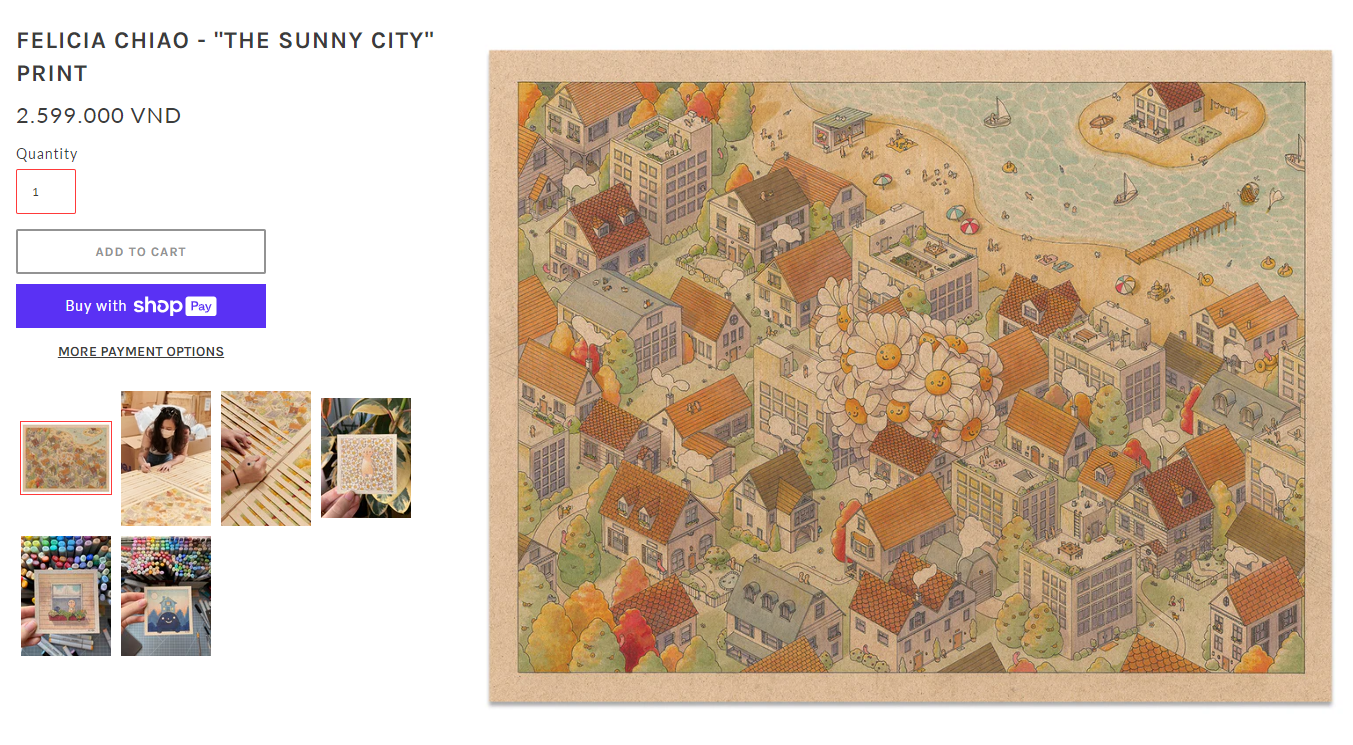
3. Take pictures or scan your artwork
It’s crucial for any small online business to photograph and present its products clearly and accurately. With customers unable to physically touch the items, providing clear and detailed images becomes essential for them to grasp what they’re purchasing.
Photographing artwork for sales
When it comes to art, product photography requires a bit more finesse compared to other items. Even a basic lighting arrangement can result in glare or color inconsistencies. For larger pieces or those featuring three-dimensional or glossy elements, consider enlisting the expertise of a professional photographer.

Scanning art for sales
The most economical method involves using a desktop scanner to scan the artwork in sections and then digitally stitching them together,”. While pieces with high-gloss coatings or resin may present challenges, scanning is generally straightforward for works on canvas or paper. For more complex scans, galleries and printing services can provide assistance.
4. Find a printer to print your art
DIY Printing
You can kickstart your art sales by producing your own prints using high-quality paper, ink, and a home office printer. While this approach can initially keep expenses low for emerging artists, it may become unsustainable as your business grows over time. Typically, this method is limited to selling paper prints, although some specialized home printers may allow printing on canvas or fabric.
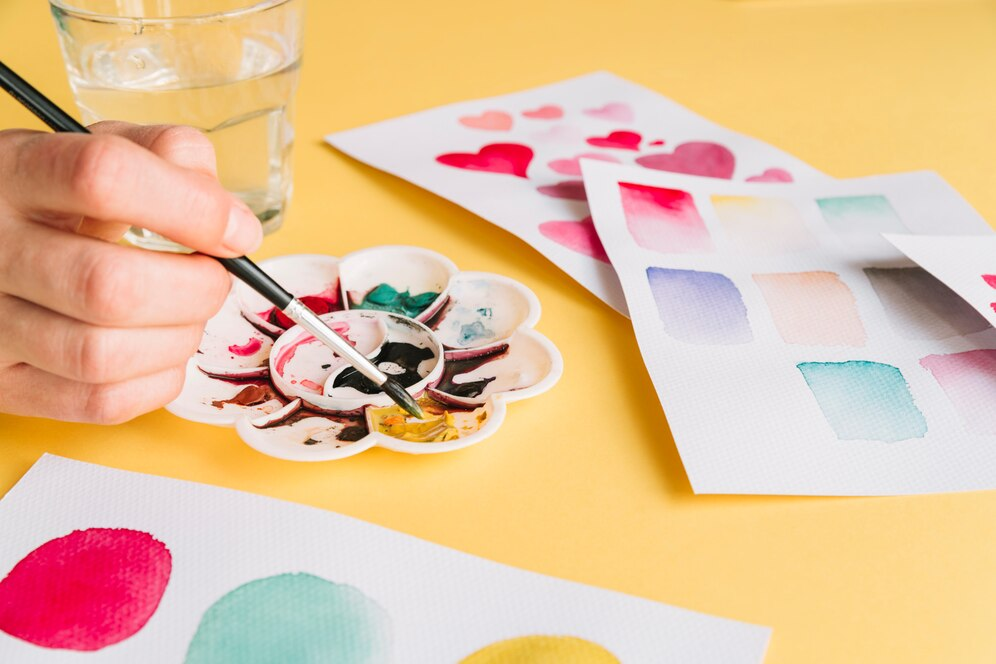
Using a printing services
A local or online printing company can mass-produce your artwork and may offer bulk discounts for multiple copies of the same piece. This approach can be optimal for selling art online, especially if you have a small inventory but high sales volume for particular pieces. While you remain responsible for packaging and shipping the prints sold online, these companies often deliver high-quality prints thanks to advanced printing technology.
Print-on-Demand Services
An array of art products available for purchase on an e-commerce platform. Ferme à Papier Print-on-demand represents the most hands-off and versatile option, particularly suitable if you intend to sell your artwork on merchandise like t-shirts or caps. These services typically integrate with your online store: when an order is placed, the integration automatically triggers printing and shipping directly to the customer.
Read more: How To Make Money With Print on Demand Shopify
5. Create your artist brand
Given that art is often a personal and emotionally charged purchase, your brand narrative as an artist can influence someone’s decision to buy. Elements like packaging and website design should align with or complement the visual aesthetic of your artwork. Your branding efforts should address the following inquiries:
- How do you present your art - under your own name, a pseudonym, or a brand name?
- What approach will you take to storytelling, and how much of your personal narrative will you incorporate?
- Do you have a mission, values, or a cause you wish to convey through your brand?
- Beyond the artwork itself, what visual direction will your brand identity take? What tone will your communication adopt?
- What branding assets are necessary? Even without design expertise or a sizable budget, you can create a logo using a logo maker and develop branding materials using free and user-friendly tools.
Answering these questions will help establish a set of brand guidelines, serving as the basis for website design, marketing collateral, and more. As your business expands, these guidelines will ensure brand consistency as you delegate tasks to employees or partners.
6. Decide on prices for your art
Setting prices for original art and art prints can vary depending on various factors like the artist’s reputation, the medium used, size, complexity, and market demand. Here’s a general guideline to help you set retail prices for both:
Original Art
- Calculate Costs: Material + Time
- Hourly Rate: Artist’s labor
- Uniqueness/Demand: Artist’s reputation, scarcity
- Comparables: Market prices
- Markup: Double or triple total cost for profit.
Art Prints
- Production Costs: Printing, materials
- Edition Size: Limited editions can be priced higher
- Artist Reputation: Influences pricing
- Market Research: Price competitively
- Markup: Typically 50-100% of production cost for profit.
Remember to regularly reassess your pricing strategy based on feedback, market trends, and changes in your own reputation and demand as an artist.
7. Make an online store to sell your art
Critical page
Every ecommerce store should include several essential pages that customers expect to find while browsing. These typically consist of a homepage, contact page, About page, collection pages, and product pages. Additionally, lesser-known but crucial pages to consider are terms and conditions, FAQ, privacy policy, and shipping policy pages.
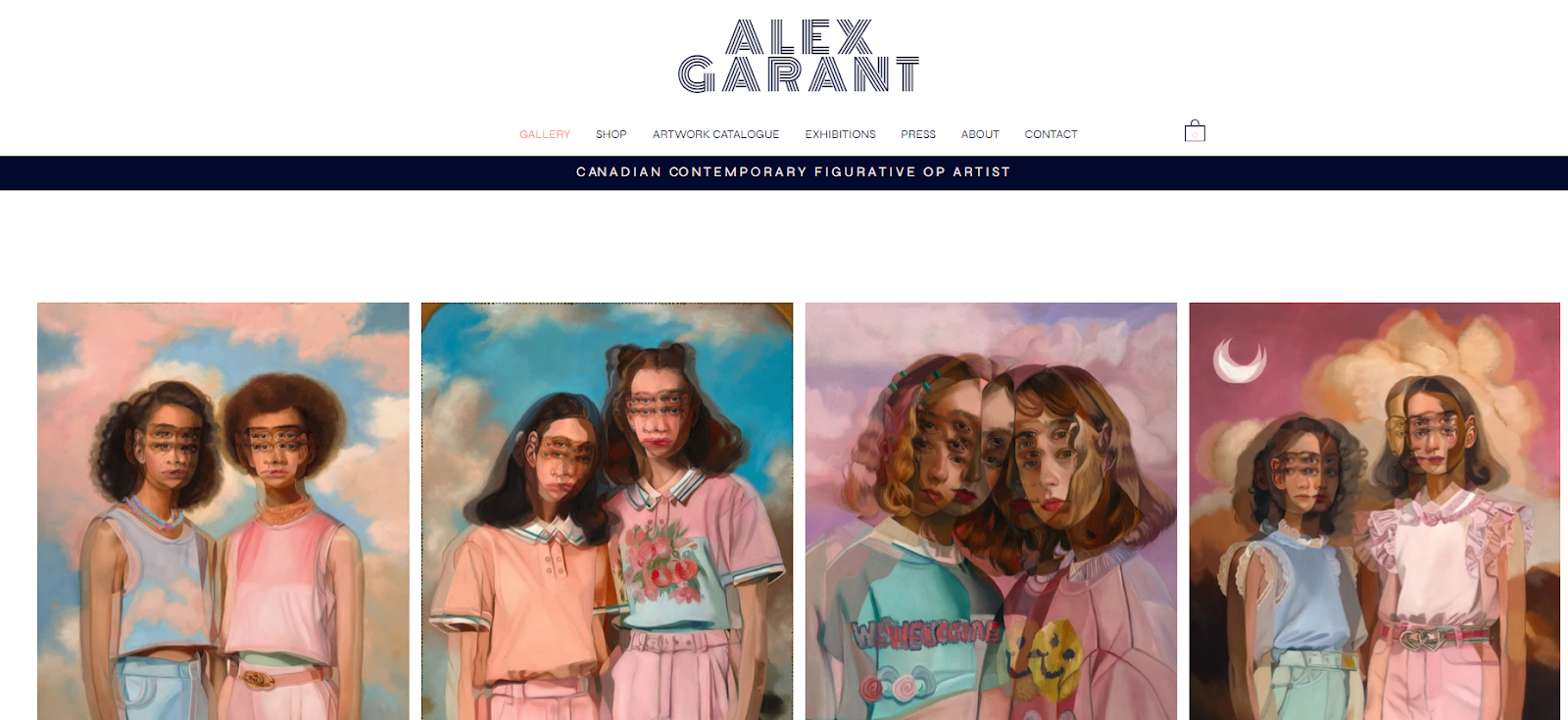
Store design and themes
When creating your online art store, opt for a Shopify theme that allows your art to stand out - preferably featuring large images and ample white or negative space. Themes serve as templates that you can customize by incorporating your own images and text, adjusting colors, and modifying layout to suit your business needs.
While Shopify themes are designed to be easily customizable without coding knowledge, you can further enhance your theme by hiring a Shopify Expert to assist with design or development tasks.
Apps for art stores
- Print-on-Demand Apps: Apps like Printful or Printify enable you to sell prints and merchandise featuring your artwork without managing inventory.
- Gallery Apps: Consider apps like POWRful Photo Gallery to showcase your portfolio or collaborate with galleries.
- Social Marketing Apps: Use apps such as Instafeed to integrate your Instagram feed into your website, showcasing your latest artwork and engaging with your audience.
- Product Page Apps: Apps like Bold Product Options allow you to offer customizable options for your artworks, such as different sizes or framing choices.
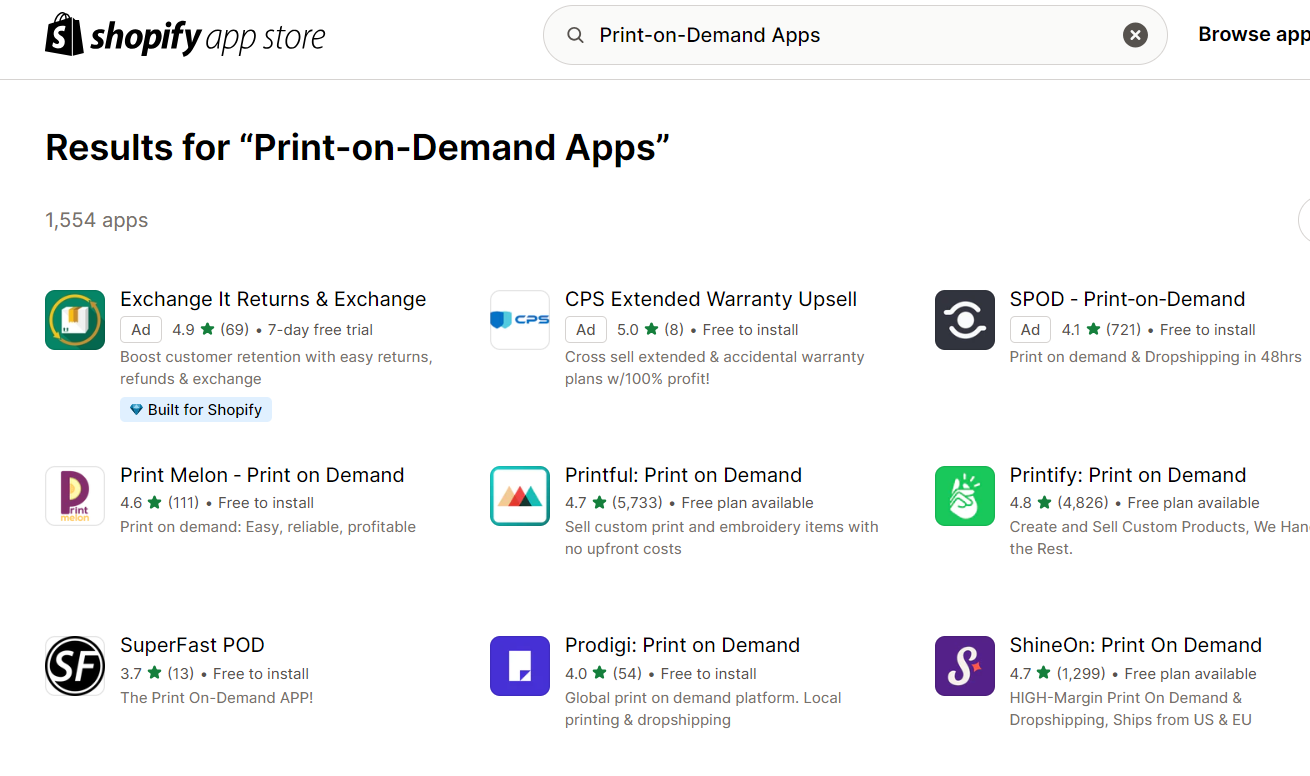
8. Explore other websites to sell your art
Maintaining an omnichannel approach is crucial for safeguarding your creative autonomy. While your own online store allows you to control the aesthetic and audience, expanding to other platforms can broaden your reach and strengthen your personal brand as an artist.
Here are some options for selling your art online:
- Dedicated ecommerce website (e.g., Shopify)
- Online marketplaces (e.g., Etsy, Amazon, eBay)
- Specialized art marketplaces (e.g., Society6, Artfinder, Saatchi Art, Fine Art America)
- Social commerce channels (e.g., Facebook, Instagram, TikTok)
- Wholesale or consignment arrangements with boutiques and galleries
- Collaborations with other online artists
9. Sell your art at events like gallery exhibitions and pop-up shops
Artists can expand their reach and connect with audiences offline as well. Utilizing in-person opportunities can drive traffic to your online store and enhance your visibility. Here are some strategies to consider when selling your artwork in real life:
- Collaborate with galleries for showcasing and excitement.
- Attend local art markets, fairs, and events with a booth presence.
- Consign or wholesale artwork to retail stores, or host pop-ups.
- Open studio to the public during launches or regular hours.
- Arrange cost-sharing pop-up shops with other artists.
- Offer artwork on “lend” or consignment for decor in retail spaces.
10. Collaborate with galleries to sell your art
You have the option to collaborate with galleries to manage the business aspects of selling your art, or as a supplementary avenue to augment your own endeavors. This collaboration opens up opportunities to reach fresh audiences, including discerning art enthusiasts and collectors. Here are somethings you should consider:
✅ DO review the gallery’s social media presence. (Purpose: Assess their audience reach and potential exposure for your artwork.)
❌ DON’T initiate contact with a gallery through social media (unless invited). (Purpose: Avoid appearing unprofessional.)
✅ DO conduct thorough research and approach galleries that align with your artistic style. (Purpose: Enhance the likelihood of a fruitful collaboration.)
❌ DON’T prioritize quantity over quality. (Purpose: Avoid diluting your message and appearing overly eager by tagging multiple galleries simultaneously.)
✅ DO your due diligence. (Purpose: Demonstrate professionalism and genuine interest through personalized communication.)
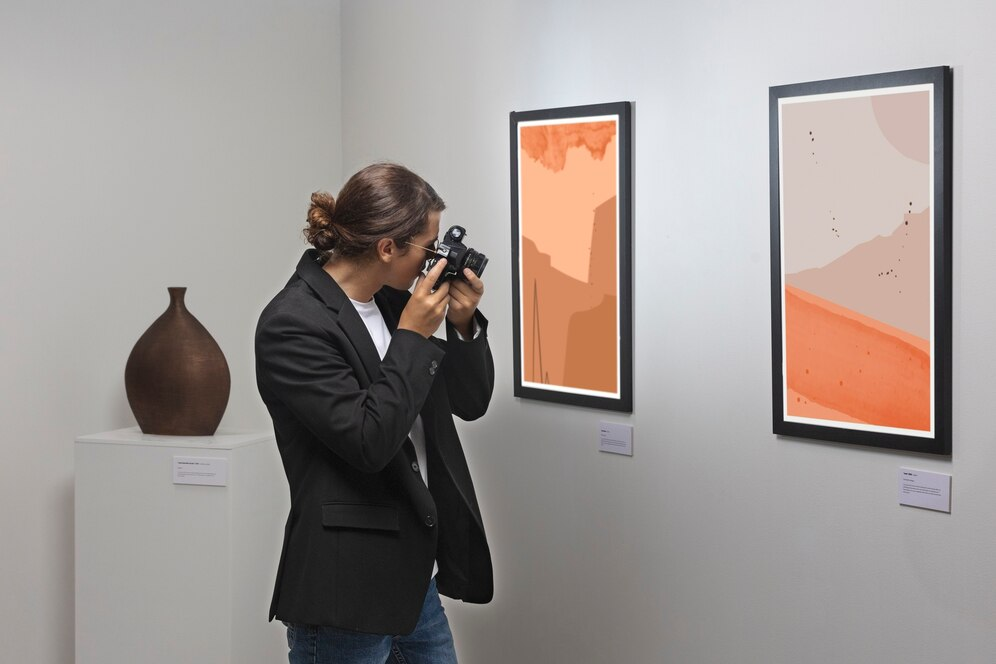
11. License your art to others
Apart from selling physical artwork, both originals and reproductions, artists have another avenue for generating income: licensing. This involves granting permission for a brand, business, institution, agency, stock photography site, or individual to utilize a digital version of your artwork for a specific purpose and duration.
On platforms like Behance, artists often showcase their work to attract clients interested in licensing illustrations or designs. Licensing agreements vary, offering rights ranging from unlimited use to specific timeframes. However, there are typically safeguards in place to protect the artist’s interests. It’s crucial to thoroughly understand any contract before signing, ensuring you retain ownership of your artwork.
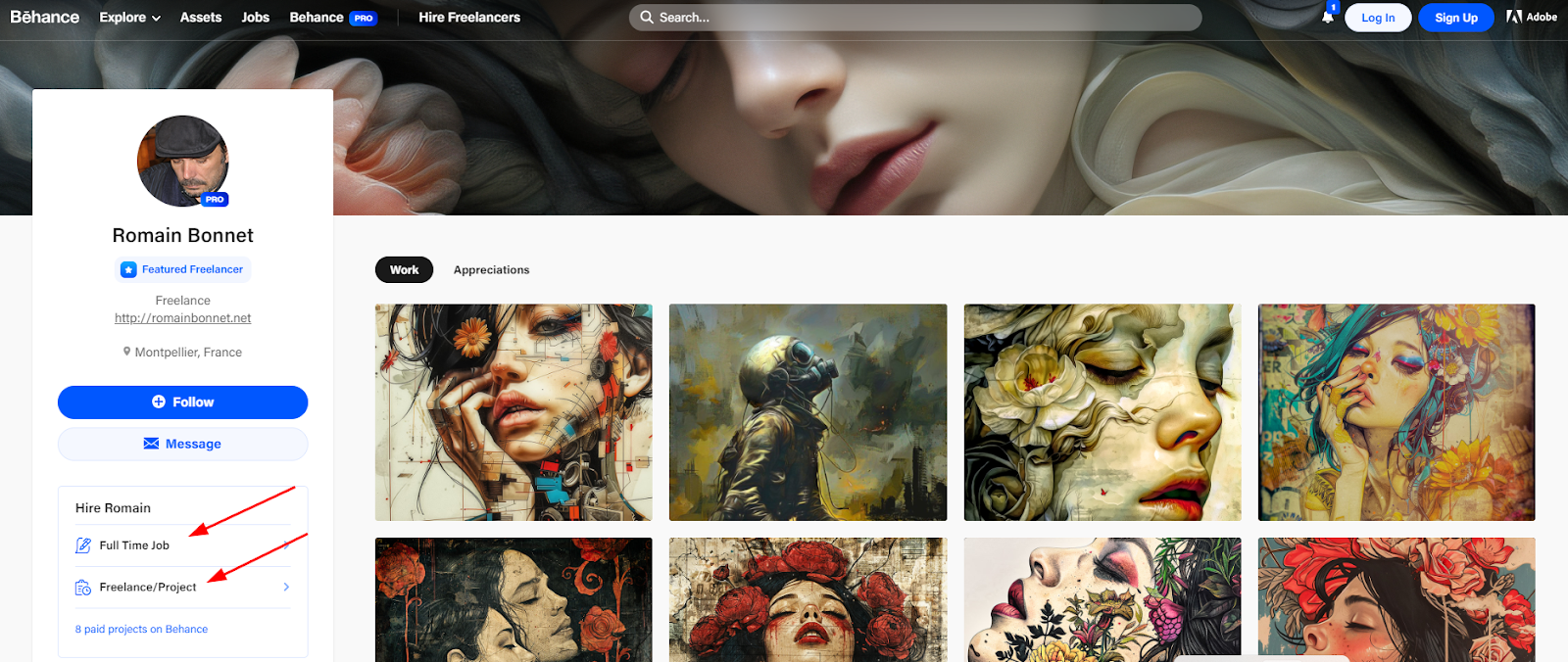
12. Promote your art brand
Many artists, like Maria, initially establish a presence on social media, building a following before launching a store and monetizing their artwork. Focusing your energy and marketing budget on the platform where you initially gained traction is a strategic approach.
To market your art and drive traffic to your sales channels, consider these strategies:
- Utilize Paid Ads: Run advertising campaigns on platforms such as Google or Facebook.
- Invest in Organic Social Content: Post consistently and engage with followers and art communities regularly.
- Host Contests or Offer Exclusive Discounts: Use these tactics to grow your email list.
- Engage in Influencer Marketing: Collaborate with creators and press to promote your site or new collections.
- Implement SEO: Learn about ecommerce SEO to enhance your store’s visibility on search engines.
- Explore Offline Marketing: Participate in art shows, markets, or collaborate with galleries to reach larger audiences.
- Leverage Content Marketing: Share your expertise through content creation, such as art tutorials, behind-the-scenes glimpses, blogs, TikTok videos, YouTube channels, or podcasts.
13. Wrap and send out your art orders
Here’s how to handle shipping for your art orders:
DIY Shipping for Art
If you’re handling shipping yourself, use cardboard tubes for large prints and posters, and sturdy envelopes for smaller ones. Protect prints with water and grease-resistant paper or clear sleeves. Customize packaging with branded touches. Integrate your online store with shipping providers for the best rates. Decide on offering free shipping or charging a flat fee.
Shipping Expensive and Oversized Original Artwork
Invest in packing materials like cardboard corners and specialty boxes. Consider rolling canvases instead of shipping them stretched on frames to reduce costs.
Shipping Art Direct with Print on Demand
Utilize print-on-demand partners for printing, fulfillment, and shipping. They often offer good shipping rates due to their partnerships.
Shipping Insurance for Fine Art
Ensure your original works are insured, as lost or damaged packages can’t be replaced. Look into extra coverage options and limitations from carriers. For valuable pieces, consider private freight companies or carriers specializing in art handling, despite higher costs.
14. Understand plagiarism and copyright for artists
It’s important for artists to grasp the concepts of plagiarism and copyright. Copying someone else’s work without permission is a breach of copyright and can lead to legal consequences. Artists should be aware of their rights and seek legal advice if they suspect their work has been plagiarized or used without authorization. Understanding these principles helps artists protect their creative ideas and ensure they receive proper credit for their work.
Conclusion
Selling art on Shopify offers a world of possibilities for artists to showcase their talent and connect with buyers worldwide. By implementing the simple strategies outlined in this guide, you can optimize your Shopify store, attract more customers, and increase sales of your artwork. With dedication and creativity, you can turn your Shopify store into a thriving platform for sharing your art with the world.





![Top 20+ Must-have Shopify Apps for 2025 [Free & Paid] - Mageplaza](https://cdn2.mageplaza.com/media/blog/must-have-shopify-apps/top-must-have-shopify-apps.png)
![[2025 Updates] Top 10+ Upsell Apps for Shopify - Mageplaza](https://cdn2.mageplaza.com/media/blog/best-upsell-shopify-app/cover.png)